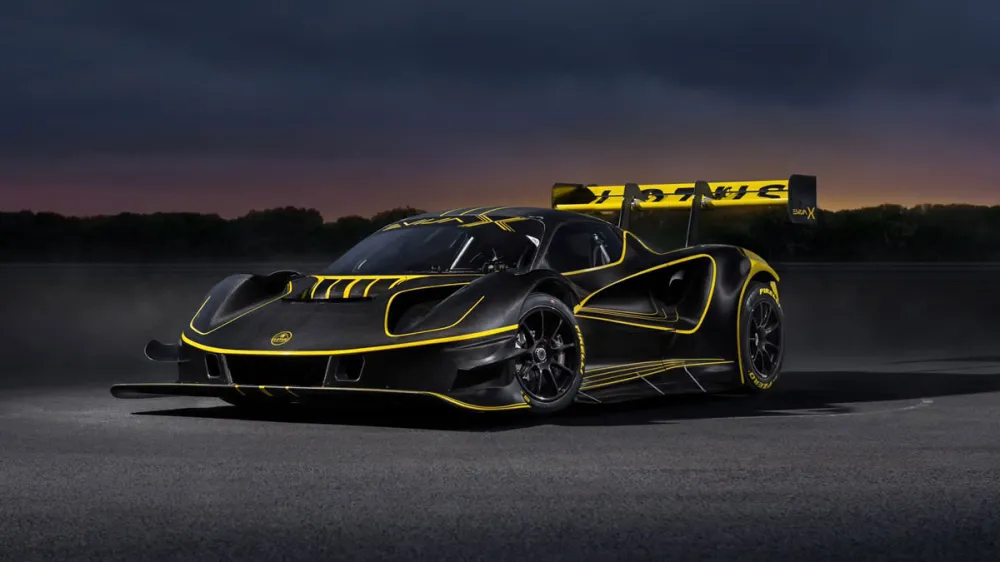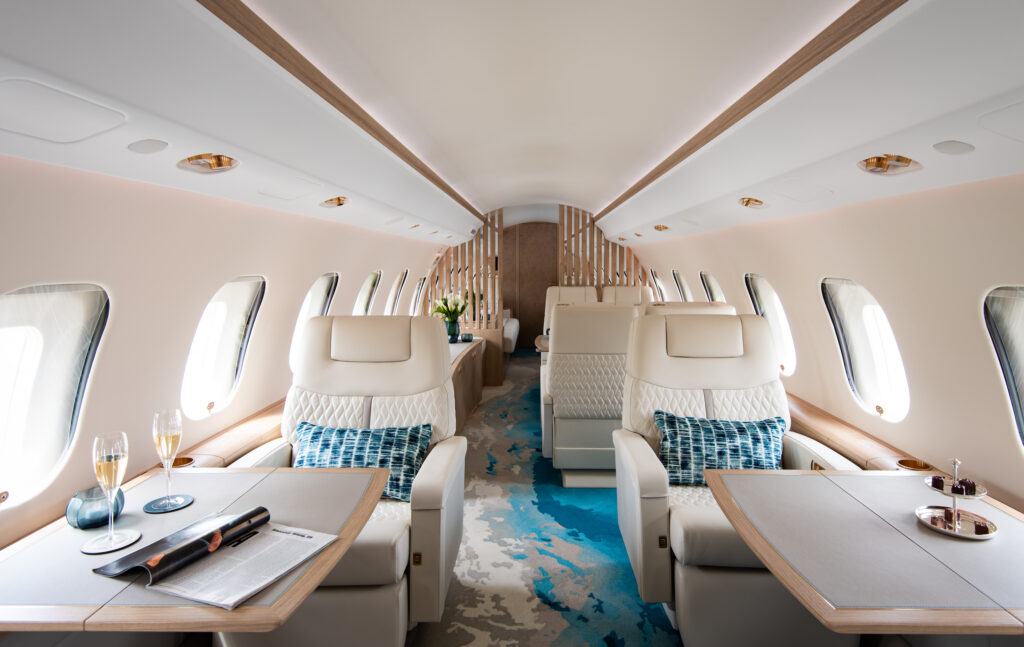From the McMurtry Spéirling, which covers zero to 60 mph in 1.4 seconds, to the 2,011 hp Lotus Evija X, these EV outliers are otherworldly.
The term “hypercar” surfaced when “supercar” failed to capture the wow factor of the next generation of world’s fastest, most exotic sports cars. The grander superlative fits the wildest crop of EVs to a tee: while supercars originated from pioneers like the overachieving Mercedes-Benz 300 SL and the V-12-powered Lamborghini Miura, futuristic battery-powered hypercars swap the noise, vibration, and harshness of internal combustion for paradigm-shifting levels of performance.
Exuding a disregard for the way things were, these atypical EVs place a finer emphasis on four-digit horsepower and ultra-slippery aerodynamics, all while introducing avant-garde design cues that bear little resemblance to those found on more familiar six- and seven-figure sleds. The following examples, presented in ascending order of power, not only represent some of the most extreme road-going vehicles on earth, they preview some of the features and styling that will inevitably trickle down into other premium segments of the industry.
McMurtry Spéirling

McMurtry Automotive’s comically styled hypercar looks more like something you’d find at the bottom of a cereal box than a world-class performance car, but the Spéirling, whose model name means “thunderstorm” in Irish, is no joke. This squat, single-seat EV packs roughly 1,000 hp and can launch from zero to 60 mph in 1.4 seconds (making it the world’s fastest accelerating car). It can also pull a staggering 3 Gs of lateral acceleration (thanks to twin turbines that create pavement-sucking downforce). The Spéirling is athletic enough to have broken the Goodwood Festival of Speed Hill Climb record in 2022, leaving the last laugh to the company founder, Sir David McMurtry.
Hispano Suiza Carmen Sagrera

Aficionados of classic cars will recognize the Hispano-Suiza name as a high-end marque founded in 1904. The original Spanish-Swiss automaker combined aeronautical engines with concours-worthy bodies for its vehicles, but eventually switched entirely to aircraft manufacturing. The company was resuscitated in the 21st century, ditching the hyphen in its moniker and adding electrification in the form of the Carmen hypercar, which premiered in 2019.
The latest Carmen variant is the Sagrera, a track-focused spinoff with a lighter battery, 1,100 hp, and enhanced cooling and brakes to tackle lap duty. Four examples of the $3.2 million Carmen models have already been delivered, and new deposit holders face a nine-month wait for the Sagrera version.
Ariel Hipercar

The Ariel Motor Company may be known for its tube-framed, gas-powered Atom and Nomad models, but the boutique British marque’s most anticipated offering will be motivated entirely by electrons. The forthcoming Hipercar avoids some of the EV hypercar’s ultra-high-end trappings by coming down to earth with a bonded-aluminium chassis and the choice of rear-wheel drive or all-wheel drive. Styled with all the subtlety of a freight train, the Hipercar will produce 1,180 hp and 1,330 ft lbs of torque. That output will supposedly be capable of hustling the machine from zero to 60 mph in just over 2 seconds.
BYD Yangwang U9

While the vast majority of EV hypercars claim seven-figure MSRPs, BYD’s Yangwang U9 distinguishes itself with a starting price of just under $250,000 dollars. The four-motor, 1,290 hp two-seater is said to hit 62 mph from a standstill in 2.36 seconds.
It has dihedral doors, much like other cars in its class, but it also features a fully active suspension that can make the vehicle “dance” at low speed by tilting and bobbing the body, much like many lowriders. And why not? The future of EV hypercars will likely be rounded out by more whimsical, affordable options like the U9.
Lamborghini Lanzador

From Lamborghini, the preeminent producer of raucous, gas-powered sports cars (and the originator of the supercar genre, with the Miura) comes the all-electric Lanzador. Debuted at the 2023 Quail, a Motorsports Gathering, the Lanzador concept surprised the assembled crowd with its high-riding, four-door layout.
“We call it an elevated GT 2+2,” said Lamborghini’s Chief Marketing Officer, Federico Foschini, at the model’s unveiling, though he went on to tell Robb Report that “it’s more of an elevated sports car.” While the V-12 hybrid Revuelto maintains the signature snarl in the Lamborghini lineup, the 1,340 hp Lanzador should satisfy the less track-focused needs of Lamborghini folks who wouldn’t be caught dead in a competitor’s EV.
Nio EP9

Electric vehicles that are engineered and built in China tend to make headlines for their affordable mass-market appeal. Nio defies the stereotype with the $3 million EP9, which boldly claims one megawatt—or 1,341 hp—of output from its four electric motors. The EP9 is equipped with a carbon-fiber chassis, active suspension, and a transmission hooked to each of its four motors.
It’s also so focused on speed that it’s not certified for road use, and has proved its performance mettle by setting a lap record at the Nürburgring Nordchleife in 2017. It was the first EV to break the record back then, and was leapfrogged by the hybrid McLaren P1 LM shortly thereafter. Nonetheless, the EP9 stands apart as an all-electric hypercar that has distinguished its country of origin despite financial headwinds and single-digit sales.
Pininfarina Battista Cinquantacinque

In 2019, the Pininfarina Battista emerged as an alternate take on the Croatia-based Rimac Nevera. It has since had numerous special editions rolled out with themes that lean on the company’s Italian coachbuilding roots. Despite a more elegant silhouette than the Nevera, Pininfarina’s four-motor, 1,900 hp beast shares the same platform and is capable of similarly substantial numbers: 60 mph in 1.79 seconds and a top speed of 217 mph.
The latest special edition tips a hat to the 1955 Lancia Florida, whose model year is called out as Cinquantacinque. Would-be Battista owners might be drawn toward the period-correct Blu Savoia paintwork and contrasting Bianco Sestriere roof, but it’s this Pininfarina’s capabilities that will surely win them over.
Rimac Nevera 15th Anniversary Edition

Proving that time flies in the world of automotive progress, Rimac Automobili’s 15th anniversary marks a notable milestone in the parabolic growth of ultra-high performance EVs. Rimac’s 1,914 hp Nevera has claimed 20 performance records, including the title of fastest accelerating production car in the world (with a zero-to-60 mph time of 1.74 seconds).
The Nevera earned another record in 2023 when it became the quickest street-legal production car to sprint up the hill at the Goodwood Festival of Speed, doing so in 49.32 seconds. This year, the hybrid Czinger 21C beat Rimac’s record by a mere half-second, proving that the battle for bragging rights will continue to rage between battery and gasoline power.
Aspark Owl

This Japanese EV does justice to the term hypercar by delivering a dizzying 272.6 mph top speed, which vanquishes the record held by the Rimac Nevera. From Aspark, the company founded by entrepreneur Masanori Yoshida, the Owl boasts four motors producing a total of 1,985 hp and 1,475 ft lbs of torque. The low-slung EV can also accelerate to 60 mph in 1.7 seconds. While the Owl has a starting price of $3.1 million, the first publicly available example was listed through an online auction site, but it did not meet the reserve.
Lotus Evija X

Lotus made its name by building fearsome race cars and feathery road cars, but switched up the formula with its first EV, the Eletre. If a 905 hp crossover isn’t your idea of extreme, the 2,011 hp Evija X should tick a few more boxes. This benchmark Lotus saw its first customer delivery to former Formula 1 champion Jenson Button, and the one-off X variant distinguished its supremacy by setting a Nürburgring lap record this past April.
The Evija, which makes 1,257 ft lbs of torque, recently faced public ignominy when it slammed into a haybale at the Goodwood Festival of Speed following a burnout lasting only 1.5 seconds. As it turned out, the big-spoilered Lotus had its traction control switched off. Hopefully, lesson learned.








